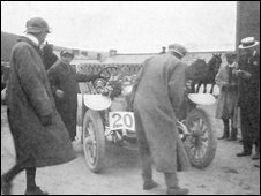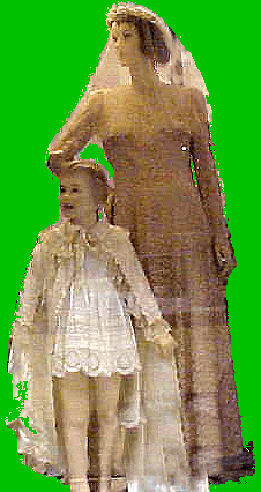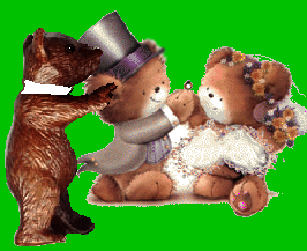Children’s Street Party
This was a huge success with over 150 children and adults turning up and the sandwich makers on overtime! The children (and adults) had a really good morning with the sun shining and fun galore. As the party came to a close the first drops of rain fell so the timing was perfect. The main purpose of the day was to introduce children and their families to the Museum and to draw in those who haven’t previously visited the Museum and it certainly achieved that goal. Our members manned a stall and so the morning also raised £65 – not the main aim but a welcome bonus. A big thank you to all who helped.
Well done!
Peggy and friends raised over £300 for Cancer Research from their sponsored walk. Enid Dean raised £203 for Ty Hafan Children’s Hospice (the preferred charity of the local branch of Moose International) through sponsors for Jen and Colin Price’s challenge walk on the Gower.
Again, a big thank you to everyone who contributed
Autumn Trip Saturday 26 Sept
Roy Pickford is organising a trip to Wells Cathedral on Saturday 26 th September. Will you please contact Roy on 01495 213377 or ring the Museum on 01495 211140 (or call in) to put your name down. More details will be available when we have a better idea of numbers.
Weddings!
You will see that this edition of the Newsletter features weddings several times – there is a lovely account in Local Voices and on Page 4, and wedding photos are the topic of the coffee morning on Saturday 12 th September. Please bring your wedding photos along to the Museum so that they can go on display for the coffee morning. Cakes will also be welcome nearer the time. Tickets for the coffee morning will be on sale at the Museum and the September lecture.
Fund raising July - £428
Lecture Programme
This starts up again in September, first Wednesday of the month. Marge has achieved something of a scoop in booking Roy Noble for October but we start off in September with a ‘Rape of the fair Country’ theme which is also sure to be of interest.
Diary Dates
6th, 13th, 20th August – T shirt, pottery and candle workshops upstairs in the Metropole, £4 per session
Wednesday 2nd September 2009 – Anniversary of the Rape of the Fair Country by Ivor Beynon
Saturday 12th September 2009 – ‘Wedding Photos’ coffee morning
Saturday 26th September 2009 – Autumn trip to Wells Cathedral contact Roy Pickford or call the Museum
Wednesday 7th October 2009 – An Hour with Roy Noble
Lectures start at 7.00pm in the Metropole Theatre, with teas and a chat downstairs in the Museum afterwards. Entry is £2 and the public are most welcome.
We will be arranging coffee mornings and other events through the autumn and winter so please call at the Museum for more information or watch the Newsletter.
Local Voices
Welsh Wedding
Around 1989 I was in the employ of Rhymney Valley District Council and in that year they decided to enhance their tourism facilities by converting a house in the unique village of Butetown into a typical 18 th Century ironworkers dwelling. The Council’s Architects did a very effective conversion with typical exhibits in each room showing how the occupants would have lived in those times. In order to publicise the opening it was decided to hold an exhibition of photographs, within the house, of early industry in that area and to this end I contacted people likely to loan such photographs including the Curator of the Merthyr Museum at Cyfarthfa Castle.
Within the wide range of photographs received was one entitled “Welsh Wedding – details unknown”. It was an unusual photograph and I was keen to use it if possible but did it relate to the upper valley area? I studied the photograph with a magnifying glass especially the colliery tips in the background which seemed to remind me of the Cwmtillery Valley, if this was so, what was it doing in the Merthyr Museum? With a time deadline to meet I decided to take it to a cousin, Mrs Wyn Kimber, a former Cwmtillery resident and seek her opinion. She immediately recognised the event as the wedding of her Aunt Lilian Turner of Club Row, Cwmtillery who had left for domestic service in Bristol; after becoming engaged to a telephone engineer in Bristol, they returned to Cwmtillery for the wedding. Her parents’ house in Club Row was very small and could not accommodate all the guests so the cake cutting was conducted outside on the unsurfaced roadway. The bride, looking quite gorgeous in a fine wedding gown, was surrounded by relatives and friends including a young Wyn who was somewhere in the assembled children.
Later they all went to the White Horse Field at the end of Club Row for further entertainment. With my guess now confirmed I then asked if it was possible to establish a date! After a moment’s thought Mrs Kimber’s eyes widened and she related that the newlyweds left for Bristol that evening but before doing so, decided to visit a cousin who had been unable to attend the wedding; she was expecting to give birth that day and they hoped to see the baby before leaving. They discovered a healthy baby girl, to be called Dorothea, born on their wedding day – 3 rd August 1931. It was then that I recognised that date as my wife’s birthday – Dorothea and I were married on 5 th July 1958.
Laurence Hale
“Scald the Milk”
When I was young the milkman called to the house every day carrying a churn of milk with half pint and one pint measures hooked on to the side of the churn. If my mother was going out she would leave the jug with a saucer on the top for the milkman to measure out what milk she wanted,
In those days I did not know anyone who had a fridge and so, in hot weather, as soon as the milk was delivered my mother would ‘scald the milk’. It was really ‘boil the milk' but ‘scald’ was always what my mother said. Incidentally, the milk was paid for by aluminium checks purchased from the local Co-operative Stores. The milkman redeemed them and my mother had 'divi' on them.
The Roving Reporter
Poet’s Corner
“Northern Splendour”
I must visit the north again,
where the highest mountains stand,
From whose lofty peaks,
I can view the surrounding land.
Counting many silvered lakes,
for there are twenty-one in all,
While in the distance is the sea,
with the coast I know so well.
There in those mountains,
as climbers practice their skills,
Others take paths to summits,
content to just walk the hills.
Along the lower ground,
run small passenger trains,
carrying many holiday-makers,
To see beauty of mountains.
This heaven set on earth,
we can reach without an aeroplane,
Knowing that in a few hours,
we can return to our homes again.
In each of the four seasons,
those mountains are so different,
But I yearn to be there now,
before all summer days are spent.
Gordon Rowlands, June 2009
100 Club – this is continuing as usual and we will have a grand draw at the September lecture. The 100 Club is a valuable source of regular funds so please encourage family and friends to join – a bargain at just £1 a month.
NEWPORT MUSEUM
Many of us pop to Newport on the bus or train for a quick shopping trip but while there while not call in at the Museum in John Frost Square to browse the exhibits and its fine art gallery, and finish off with a cuppa in the café (rather like our own Museum!). Details are set out below of the temporary exhibition currently on display.

An exhibition of modern & contemporary prints from the permanent collection at Newport Museum and Art Gallery, together with work by practicing printmakers
27 June - 29 August 2009
For the first time in many years Newport Museum and Art Gallery is displaying a large selection of its collection of artists’ prints, which date from the 1930’s to the present day. These are original prints, many printed by the artists themselves, in their chosen medium, which include woodcuts, screen prints, lithographs, linocuts and etchings.
The print allowed artists to disseminate their work more widely, and for galleries with limited means to acquire work by important artists at an affordable cost. These are usually in an edition limited by number, and all of the selected prints are important or interesting in their own way, often by artists of national or even international fame. Through years of wise purchasing by previous curators, Newport’s collection is now regarded as significant, both academically and artistically, of artists whose work is much admired and sought after.
The Gallery has not just raided their stores and selected what “looked nice”. They also invited six artists who currently practice printmaking to go through the stores and make their own choice and then make their own response to their chosen pieces using whichever printing method they preferred; these will hang alongside those from Newport’s collections. ( Museum website)
100 Years Ago
The 100 th anniversary of the first international motor rally is being marked at the Welsh Museum of speed in Pendine. In July 1909 over 40 cars along with motorcycles and thousands of spectators descended on Pendine sands. With the national speed limit just 20mph at the time and few cars on the roads, people were hoping to see speeds in excess of 60mph. The Carmarthenshire beach has seen the world speed record broken five times but this first rally would undoubtedly have been a real spectacle at the time. It was organised by the Motor Union which later became the RAC and the event has been described as a sort of tourist board idea to bring people from all over Britain and the continent. Although the day started misty it  turned into a glorious summer’s day and many of the spectators were from top society sporting the latest London and Paris fashions. Those expecting to see high speeds were disappointed as the hot weather left the sand too powdery but there were a series of events for spectators to enjoy.
turned into a glorious summer’s day and many of the spectators were from top society sporting the latest London and Paris fashions. Those expecting to see high speeds were disappointed as the hot weather left the sand too powdery but there were a series of events for spectators to enjoy.
Museum Matters
Weddings and wedding rites
 In 1997 when we were looking for a new home for our museum a handful of volunteers started documentation of our artefacts. Laura Lewis was one of these volunteers and at that time Laura donated a 1920s wedding dress and said she would fill in the Acquisitions Form when she came in to do a stint of documentation. Unfortunately Laura suffered a stroke before she came in again, it affected her memory and now Laura does not remember anything about the wedding dress. Can you help?
In 1997 when we were looking for a new home for our museum a handful of volunteers started documentation of our artefacts. Laura Lewis was one of these volunteers and at that time Laura donated a 1920s wedding dress and said she would fill in the Acquisitions Form when she came in to do a stint of documentation. Unfortunately Laura suffered a stroke before she came in again, it affected her memory and now Laura does not remember anything about the wedding dress. Can you help?
CHRISTIANS
Marriage and family life are not a necessity for all Christians and in some traditions there is respect for those who choose not to marry, monks and nuns, and Roman Catholic priests. All Christians regard marriage as a serious commitment, and marriage vows are made before God. Some traditions, like the Roman Catholic Church, do not recognise divorce.
ISLAM
Marriage, family life and the raising of children are regarded as part of God's provision for humanity; in Islam there is no value in celibacy.
Allah is shaken when divorce happens.' In Islamic law it is allowable for a man to have more than one wife, and in traditional Islamic societies this is a way of making sure that every woman can have the protection of family life. But the prophet Muhammad advised that a man who felt unable to treat several wives with equality between them should marry only one.
JEWS
Marriage and the raising of children is an important part of Jewish life. In many Jewish communities the role of the matchmaker is still important; celibacy is not encouraged.
The celebration may be in a synagogue, but in many countries it is often held in the open air. The bridegroom places a gold ring on the bride's forefinger. The marriage contract (the ketubah) is read out, and the rabbi recites seven marriage blessings. At the end of the ceremony the bridegroom breaks a wineglass under his foot. There are different explanations for this: some say that, even at a time of joy, it recalls the destruction of the Temple in Jerusalem. A Jewish couple stand under the hupah, a canopy decorated with flowers which symbolises the new home the bride and groom will make together. The wedding takes place on any day other than the Sabbath or festivals.
HINDU
In traditional Hindu culture, as in Indian culture generally, it is normally considered the responsibility of the parents and family to find suitable spouses for the sons and daughters of the family, either by word of mouth or through classified advertisements in newspapers. The family astrologer will often be asked to examine the couple's horoscopes, and if they are compatible, to choose a suitably lucky day for the ceremony to take place.
The Ceremony
The bride's parents begin the wedding ceremony by offering a traditional welcome to the groom, including various symbols of happiness, fertility, good life, food and safety. While this is happening the bride herself may make private prayers to the goddess Parvati. She then joins the bridegroom and, after songs of blessing have been sung, the bride's father formally gives her away. The couple's union is marked when their right hands are symbolically bound together with a piece of cotton thread dyed with yellow turmeric, and water sprinkled over them. They then walk around the sacred fire three times, offering grains of rice. The marriage ceremony is not complete until the couple have taken seven steps, making a vow at each step. The seven steps represent food, strength, prosperity, well-being, children happy seasons, and harmony in their marriage and friendship. The couple are now married, and after blessings and prayers, friends and family share the wedding feast.
SIKH
Marriage The family assists in choosing a partner. Great care is taken and no-one is made to marry against their will. During the ceremony, which follows the usual form of service, the couple are given advice on marriage and a hymn, the Lavan, is sung. After each of the verses the couples walk round the Guru Granth Sahib, with their families in attendance to show their support for the couple.
SHINTO Marriage
A couple are married according to Shinto rites. Many rites of passage and community celebrations in Japanese life are marked by Shinto ceremonies. However, Shinto practice is sometimes understood as a social rather than a  personal commitment, a way of maintaining family traditions and affirming links to the community. It is perfectly possible to combine faithful practice of the Shinto traditions with a personal devotion to another religious tradition, such as Buddhism or Christianity.
personal commitment, a way of maintaining family traditions and affirming links to the community. It is perfectly possible to combine faithful practice of the Shinto traditions with a personal devotion to another religious tradition, such as Buddhism or Christianity.
Source Religions of the World
Don Bearcroft Curator
Top Of Page
